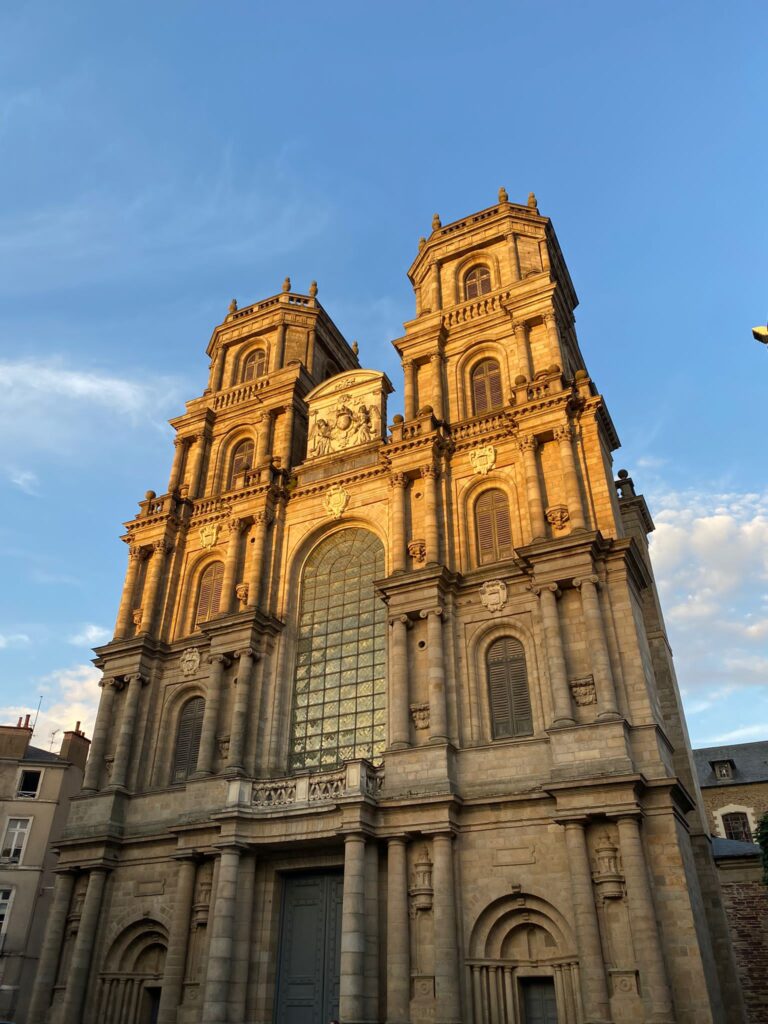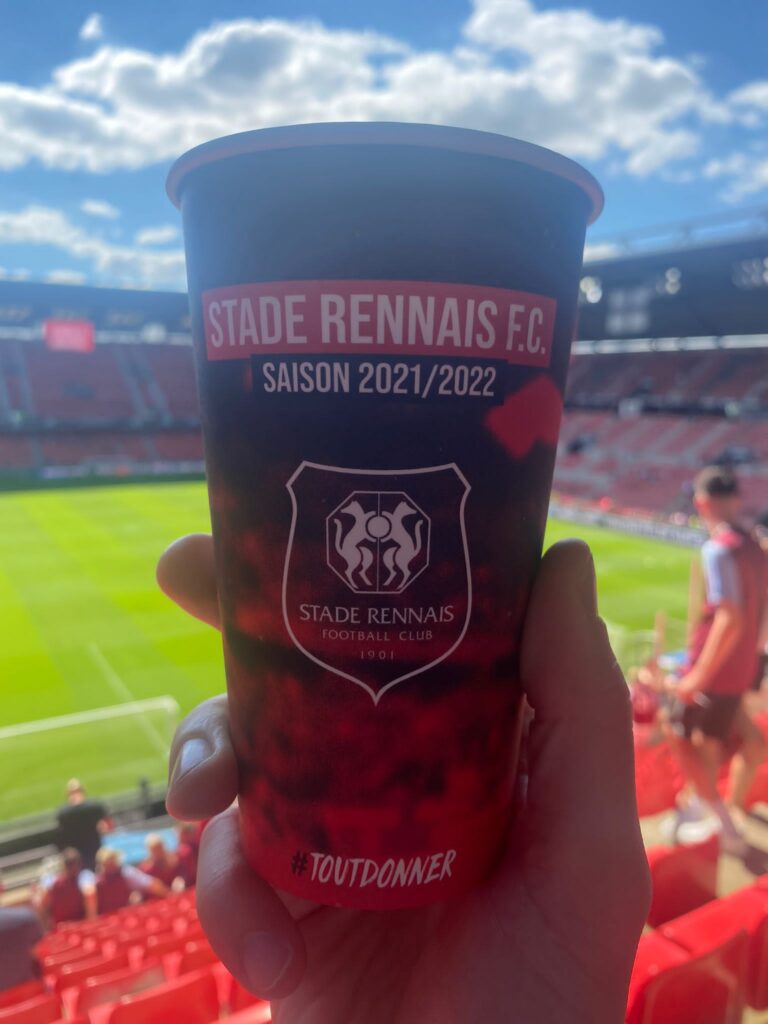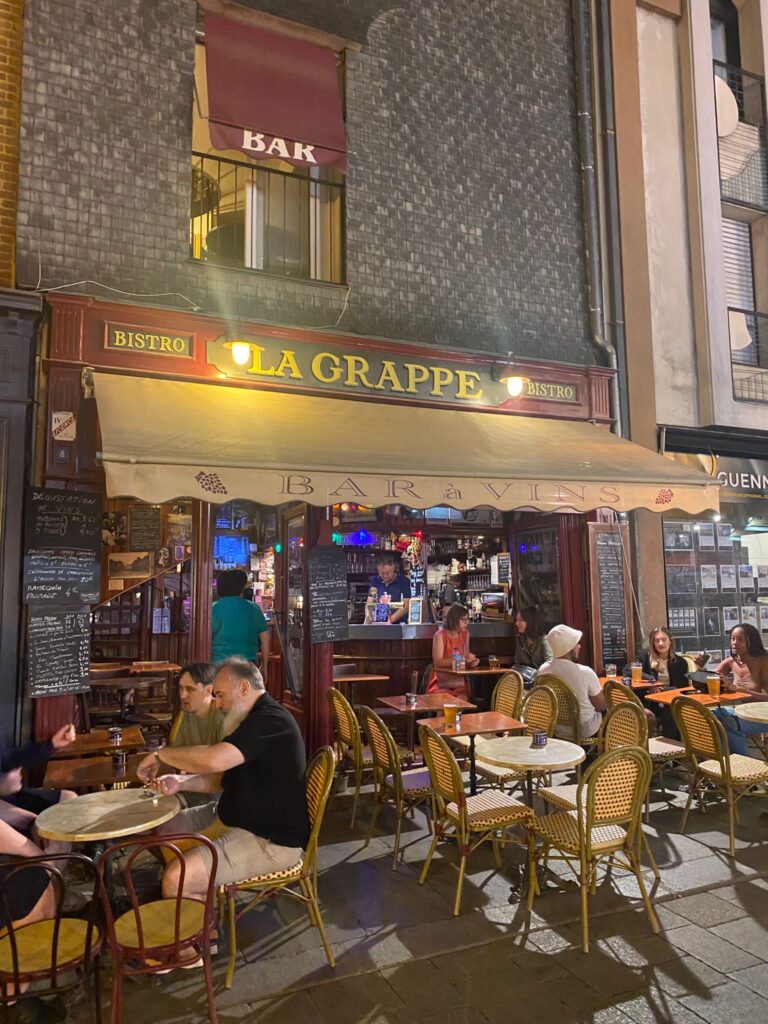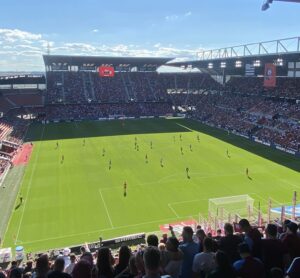Here at Soccer Knowledge Hub, we’re always looking for fresh and creative ways to engage with soccer fans by adding a unique flavor to the content we produce. That’s why we’re excited to announce our new segment: SKH Visits. We will introduce you to clubs that we visit, detailing our first-hand experience of the sights, sounds, and passion on matchdays.
Viva La France
Tucked away in the northwest corner of France is a club whose name sounds increasingly familiar to soccer fans from further afield because of how regularly they have qualified for UEFA competitions recently.
While they don’t have many significant honors to boast of (just three Coupe de France trophies), Stade Rennais have made a healthy habit of consistently achieving high league positions. In the 2019-20 season, they qualified for the Champions League, which is a remarkable achievement and would have delivered a sizable financial windfall.

Rennes is a student city today, paying homage to the students who created Stade Rennais in 1901. Back then they were playing provincially, until French professional soccer was instigated, with Stade Rennais as one of the inaugural participating members.
They’re particularly proud of their regional ties. Dotted everywhere around Roazhon Park, the site which has been home to Stade Rennais for 110 years, was the black and white flag of Brittany.
Top division clubs in this region aren’t scarce either; Lorient and Brest are the other Brittany-based members of Ligue 1. Nantes and Angers are nearby too, providing robust competition for this section of France.
It’s a contentious issue surrounding Stade Rennais’ arch-rivals, Nantes; many within Nantes see themselves as Bretons, as those from Brittany are known. It was only when Rennes became the administrative capital of the region that the mayor of Nantes successfully campaigned for his city to leave Brittany and become the capital of a neighboring region.

Such is the way of life in Brittany, those who are denied the title argue that they should, in fact, be considered a Breton. Another example of Stade Rennais publicizing their local identity is in their stadium name: ‘Roazhon’ means ‘Rennes’ in Breton.
In truth, Rennes might not have as many obvious landmarks as some other French cities, but don’t let that fool you. Strolling through Marché des Lices is a pleasant way to start your Saturday morning, awash with its fresh food options in the market stalls. Parc du Thabor offers serenity away from the city center vibrancy. Then there’s the impressive Cathedral Saint-Pierre, imposing itself over the cobbled streets in the heart of Rennes.
What was evident in Rennes was how engaging the locals were. They’d regularly strike up conversations with you because it’s in their cordial nature to do so. When they discovered we were English, they would ask how we are enjoying the city, and how long we are staying, before expressing their love for Rennes and providing tips on what to see.
Upon arrival at Roazhon Park, fans are greeted by the stadium’s dark facade, engulfing adjacent houses. It’s refreshing to see that, in an age of futuristic design and inconsiderate relocation, traditional grounds still exist within city limits, as opposed to glass domes that are miles away for cheap land, with the prospect of chain restaurants inevitably appearing to cash in on the matchday footfall.

As sociable as the city-dwellers were to us, that hospitality wasn’t replicated by security personnel outside the stadium.
I’d heard all about the trouble that Ligue 1 clubs have faced regarding fan violence last season, but I certainly didn’t think there’d be a line of armed police awaiting us on arrival at Roazhon Park. Perhaps this is commonplace in French soccer?
This, followed by a thorough check from club security, probably should’ve been all the warning away fans needed that alcohol sales in the stadium would be prohibited. Cue lots of disgruntled fans. If you’re walking from the city, there are nice pubs en route to have a beer in to quench your thirst.
It’s often the case, at least in English football, that security staff do their utmost to keep the home and away fans separate to avoid conflict. This seems to be the case in France too, yet the steel fencing keeping fans apart at Roazhon Park didn’t dampen convivial spirits. Home fans were conversing with their away counterparts through the fencing, showing genuine interest in each other’s clubs and taking selfies with one another.
The stand opposite me housed the Roazhon Celtic (presumably the culture of Celts) Kop, a partizan section of Stade Rennais ultras who endlessly bounced to the drummer’s intoxicating beat and waved giant flags celebrating their cultural heritage.

I had to keep reminding myself that this was a friendly fixture. You’d never have known it from the 20,000 fans creating an atmosphere befitting a league encounter, not an arranged exhibition match. Frankly, it puts English pre-season atmospheres to shame.
What did strike me, overlooking the concourse the home fans in our stand were congregated in, was how many renowned names were printed on the backs of their jerseys.
At the risk of sounding patronizing to a household French name, I wasn’t expecting to recognize the number of players who’ve worn the red and black as I did; Eduardo Camavinga, Hatem Ben Arfa, Raphinha, Petr Čech, Ousmane Dembélé, and Abdoulaye Doucouré, to name a few, have all played for Stade Rennais in recent memory.
I’ve since come to learn that, throughout France, the club’s academy is famed for how successfully it develops hot prospects. Organizations across Europe sit up and take notice of Stade Rennais’ youth system because they quite frequently mature into top-level players.
This not only proves that Stade Rennais are adept at spotting and attracting talented youngsters, but they know when’s best to sell those stars, after they’ve blossomed into more seasoned figures, for significant amounts of money.

Success in player development and subsequent sales can lay the foundations for strategic improvement organizationally, as evident in Stade Rennais’ league finishes. Fans of Stade Rennais aren’t deluded; they understand that the club must sell these sought-after assets
This doesn’t mean that there is no quality within the Stade Rennais team anymore. Far from it.
They employed a high press from their attackers, forcing Villa defenders to think quickly and release the ball under pressure. It worked, as Villa made some sloppy early errors before they eventually found their composure.
Stade Rennais exchanged some intricate passes, hassled their opponent’s defense with urgency, and regularly threatened from set pieces. The threat posed from corners and free kicks was a recurring theme throughout the match and should serve as a caution to their league opponents in the coming weeks.
Although Aston Villa came from behind to win 2-1, Les Rouge et Noir fans can be confident that their progress will continue on and off the field.
After the game, I wanted to see what the food stands around stadiums were like in this part of France. I’m always hopeful I’ll find something a little different from my soccer trips beyond my usual vicinity.
The queues were long, so I decided against waiting but noticed vendors selling “galette-saucisse”. In my experience of soccer abroad, most stalls either use the same words for food that English vendors do or those words are the same in French (forgive my lack of knowledge of French customs/language).
Later, when I Googled what I’d missed out on, I discovered that a galette-saucisse was similar to a hot dog, but instead of bread, the sausage is wrapped in a crêpe. As you can imagine, I regret my impatience and would implore you to get one if you’re ever in Rennes as they look fantastic.

Thankfully the Stade Rennais fans weren’t disheartened by their team’s loss and many joined the traveling away fans for drinks in some of the city’s larger bars, basking in the summer evening warmth.
My trip to see Stade Rennais was a very enjoyable one. Due to its size, Rennes is walkable but packs a mighty punch for a small city. If you’re ever in or around Brittany, I’d recommend a trip to Roazhon Park as part of your trip.
The club is going in the right direction under its current stewardship. They seem to make most of their financial decisions wisely, and it’s benefitting their long-term aspirations.
I certainly wouldn’t snub the opportunity to head to Rennes again – and I won’t pass up the chance to try the galette-saucisse next time either!

